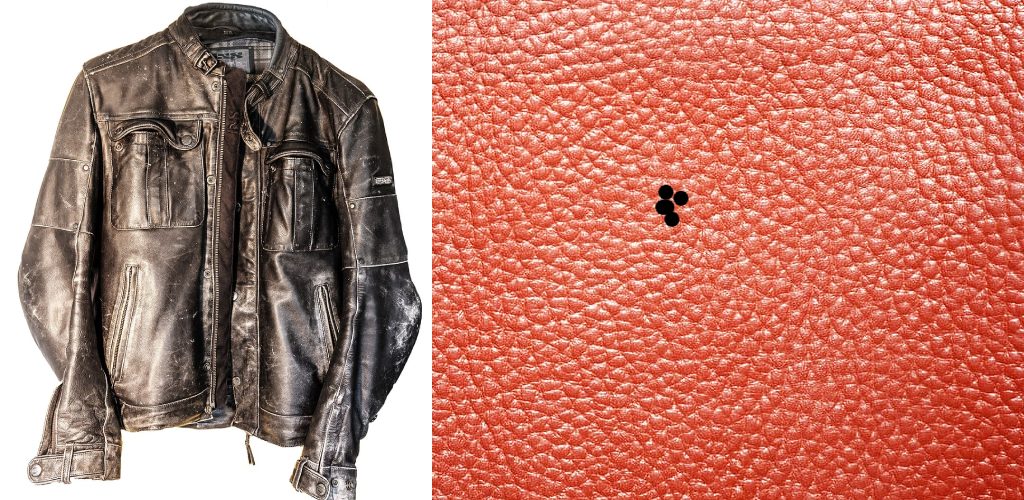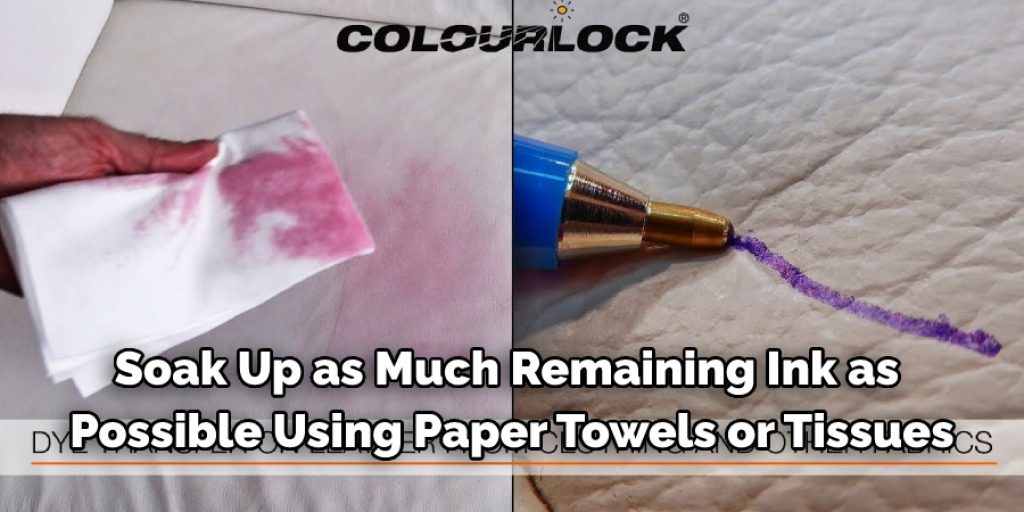How to Remove Ink From Faux Leather
Introduction:
Faux leather is an artificial material, usually polyurethane, acrylic, or PVC. It is intended to be used as a substitute for the animal hide typically used in genuine leather goods. Faux leather can be made to resemble real leather and has all of its advantages (durability, low maintenance) but without the disadvantages of using animal materials (such as ethical considerations). In this article, I will discuss removing ink from faux leather.

How does Faux Leather Get Ink?
When you begin to have issues with your faux leather, it’s usually because of ink stains. Faux leather differs from genuine leather because it has a layer of plastic on the outside and is more prone to staining.
The chemicals used in making faux leather make it susceptible to staining and blemishing from even the slightest contact with ink, paint, or other products. A permanent marker touching the surface would cause an instant stain, or perhaps even something as innocuous as a pen accidentally running across its smooth finish could leave an imprint.
Where Do I Find Faux Leather?
Many types of items are commonly manufactured from faux leather–clothing (pants, shoes), handbags, wallets, belts, and even upholstery for couches and chairs. Many furniture stores also sell “leather look” upholstered furniture where pieces are made from faux leather.
A common household item that is often made of faux leather is the apron. It may be used when cooking, cleaning, or having special craft time with your children. Another household item is the photo album. It is used to store and display cherished family memories and often comes in various colors and styles (e.g., red, black).
Stepwise Guide on How to Remove Ink From Faux Leather:
Step-1
Scrape the excess ink off with a blunt knife or spoon. This will reduce the blotching effect and work as an absorbent material to soak up some of the excess ink. Of course, be very careful while doing this.
Step-2
Apply Heptane (or any other solvent) to a clean white cloth and wipe down the surface of the faux leather material by using circular motions until you can see that most of it has been absorbed into the cloth itself. This should remove much of the excess ink residue from your faux leather but not all of it because it will damage your faux leather, so be careful about that part!
Step-3
Soak up as much remaining ink as possible using paper towels or tissues. This will take some time but is important.

Step-4
Cover the area with a liberal amount of baby powder or corn starch and allow it to sit for about 10 minutes. Now, wipe away the excess powder, which should have absorbed most of the ink by now, leaving your Faux Leather Surface looking as good as new!
Step-5
You can always repeat this process if you feel that traces of ink remain on your faux leather surface after step 4. These steps should work fine for all types of faux leather surfaces, including handbags, jackets, shoes, and so on!
You Can Check It Out to Fold a Leather Jacket
Precautions While Removing Ink From Faux Leather
Faux leather may also be referred to as “pleather”. Be extra careful when using chemicals. Avoid allowing them to soak through or drip on the fabric area underneath. Faux leather can be extremely stiff and difficult to clean. However, stains can become much more noticeable after cleaning if they reach the actual material of the garment, so you must take precautions not to let any of these cleaners seep through.
If this happens, please stop immediately! This is especially important when working with black ink, which could permanently stain the under a layer of faux leather surface regardless of how carefully it’s treated.
For best results, treat spill/stain immediately. Wear protective latex gloves while handling the solution. Pre-test the chosen product for colorfastness before applying. Always spot test an area or inconspicuous part of the furniture for color-fastness and color. Stop immediately if you notice any discoloration on the faux leather surface after treatment!
You Can Check It Out To Remove Ink From Faux Leather
How to Cure Faux Leather?
Unfortunately, faux leather, also known as vegan leather or polyurethane leather, has a minimal lifespan when used on furniture. This isn’t because it doesn’t look nice when you first get it – far from it! Indeed, I have a confession to make: I am slightly addicted to this material and own several items made from its supple texture.
Unfortunately, however, every piece creases horrendously after only the most minimal wear, making them appear at least ten years older than they actually are! After giving my distressed-looking new handbag some much-needed TLC with the iron (and having to repeat the process several times), it occurred to me that if something as smooth as a hot piece of metal could smoosh the creases out, then perhaps there were other ways.
Hence, I dug and put together this handy list of home remedies to remove those unsightly shiny lines from faux leather so items look and feel new again.

Putting a hot electrical appliance up close to my precious bags makes me cringe, but it does work! Yes, it’s risky; yes, it doesn’t always give 100% satisfaction, and yes, your arm may get tired, but you can’t argue with the results.
Just take extra care and only do a small spot at a time. Also, if you will attempt this method, try and use your iron on the reverse so that any no-doubt alarming instructions are not actually visible.
Place some paper underneath the crease and next to the outside of your bag (to protect it from drips), then lay a damp cloth over this and gently run your hot iron over it. If you have an old sheet or pillowcase lying around, you could cut out two layers to give yourself nice thick protection – make sure the fabric is 100% cotton. This will stop any scorching or staining and should also help prevent any ink mark from transferring from the paper onto your leather.
If you have a nasty crease or are quite visible in an exposed area of your item, then this method will need to be repeated several times. Just repeat the process above but allow the paper and cloth layers to cool before reattaching; I find it best to leave them overnight to dry out again completely. As the iron gradually heats these materials, any wetness left in them should evaporate, leaving you with a nicely ironed piece of faux leather without having had to compromise on safety.
Conclusion:
I hope this article has been beneficial for learning how to remove ink from faux leather. Thank you, and have a nice day!




